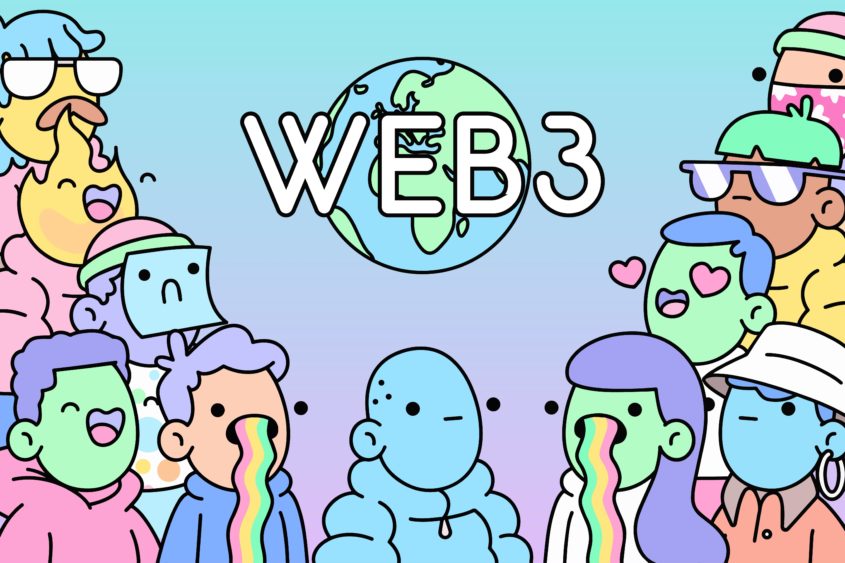
First, there were Web 1.0 and Web 2.0. Now, following the natural order of things, we have web3 (as it is stylized), and a new technology-based gold rush. A quick refresher: The first World Wide Web, now more than 30 years old, consisted of three basic ideas: the Universal Resource Locator (URL), a universal way of addressing documents; the HyperText Markup Language (HTML), a way of embedding those URLs in documents/applications so as to link them together; and the HyperText Transfer Protocol (HTTP), the plumbing which makes the linkage actually work via the Internet. It was the answer to a basic need: making it easier to find information than looking it up in printed materials. It established a way to publish things that didn’t depend on gatekeepers (publishers choosing what would be printed).
Clearly, that basic idea, making it easy to find information has succeeded beyond the wildest dreams of those original innovators. (Tim Berners-Lee and others, who created the World Wide Web to better share information about physics experiments.) Domain names became a valuable commodity, and speculators registered hundreds of them in hopes that some of them would become valuable. Some did: hotels.com sold for $11 million in 2001. People figured out how to enable commerce on top of the Web: Amazon launched in 1995, selling books. That also seems to have turned out pretty well.
But there was still a big divide between the World Wide Web and the dedicated applications that ran on people’s desktops. Version 1 of the web was (more or less) a series of relatively static pages that appeared in a browser, whereas well-designed desktop applications were seamless interactions.
Then Web 2.0 came along. The big innovation underpinning its arrival was AJAX (Asynchronous JavaScript and XML). AJAX appeared in a primitive form in Microsoft’s implementation of Outlook Web Access and allowed parts of a web page to be updated with information from outside sources without having to re-display the entire page. Outlook Web Access (in 1997) begat GMail (2004), which begat Google Docs, which begat Outlook 365 and a raft of other responsive web-based applications. This interactivity gave rise to Facebook, Google, Netflix, and other dominant companies of the modern Web.
Web3, its proponents say, is a reaction to the centralization of power that Web 2.0 created. The answer is the blockchain, distributed ledger technology, which I wrote about in December 2017. Since no one controls the blockchain, they say, no one entity can control web3. It’s a noble goal, but history shows us that noble goals are subverted. Google rose to power by weaponizing people’s desire to find information online easily with advertising. Facebook made a seamless, friendly web app that is a targeted advertising machine in disguise, made more effective by knowing what we like to click on (and giving us more of it).
To quote software engineer Stephen Diel, “Sprinkled around all these articles [about web3] are all manner of idealistic and utopian ideas about how we can rebuild the internet to reflect our aspirations of a more humane and egalitarian society.” He goes on to opine, “At its core web3 is a vapid marketing campaign that attempts to reframe the public’s negative associations of crypto assets into a false narrative about the disruption of legacy tech company hegemony.” (You can read the rest of “web3 is bullshit” at tinyurl.com/yaogerkn).
It’s true that the blockchain is decentralized, though that trust depends on less than half of the computers that “run” the blockchain being owned by a single actor. But that doesn’t inherently remove the threat of centralization. Because Google had the best search technology at the time (PageRank), it attracted investment capital and was able to expand, and eventually owned the search market.
Regardless of noble ideals, venture capital will doom web3 to centralization just as it did Web 2.0. A company doesn’t attract venture capital without the venture investors believing that the company has a decent chance of being No. 1 or 2 in the marketplace it seeks to address. As soon as someone has a great idea on how to make money from the decentralized web—such as making it easy for people to create and trade NFTs—centralization will occur. It’s also important to acknowledge that there’s more venture money chasing investments these days. Startups with valuations of $1 billion or more (“unicorns”) are no longer rare. In fact, more than 40 firms in the crypto/blockchain sector, which acts as a proxy for web3 investment, reached unicorn status in 2021. The pattern of the free marketplace is centralization.
Jack Dorsey, founder of Twitter agrees with me. On Dec. 20, he tweeted: “You [users] don’t own “web3.” The VCs and their LPs do. It will never escape their incentives. It’s ultimately a centralized entity with a different label. Know what you’re getting into…”
Author
-

Michael E. Duffy is a 70-year-old senior software engineer for Electronic Arts. He lives in Sonoma County and has been writing about technology and business for NorthBay biz since 2001.
View all posts



